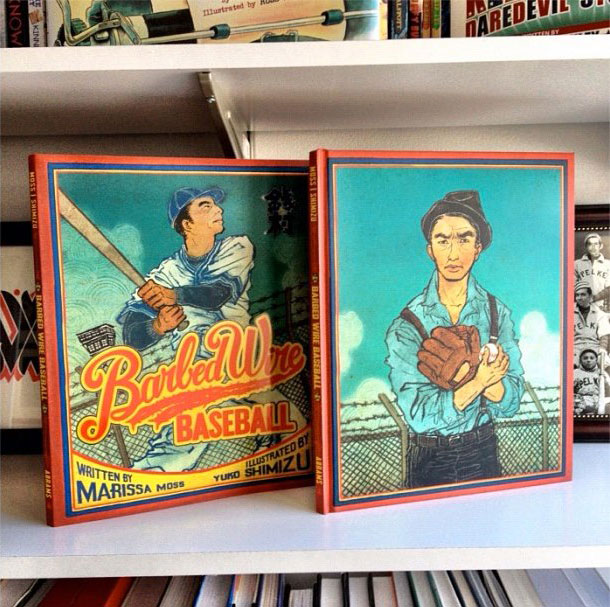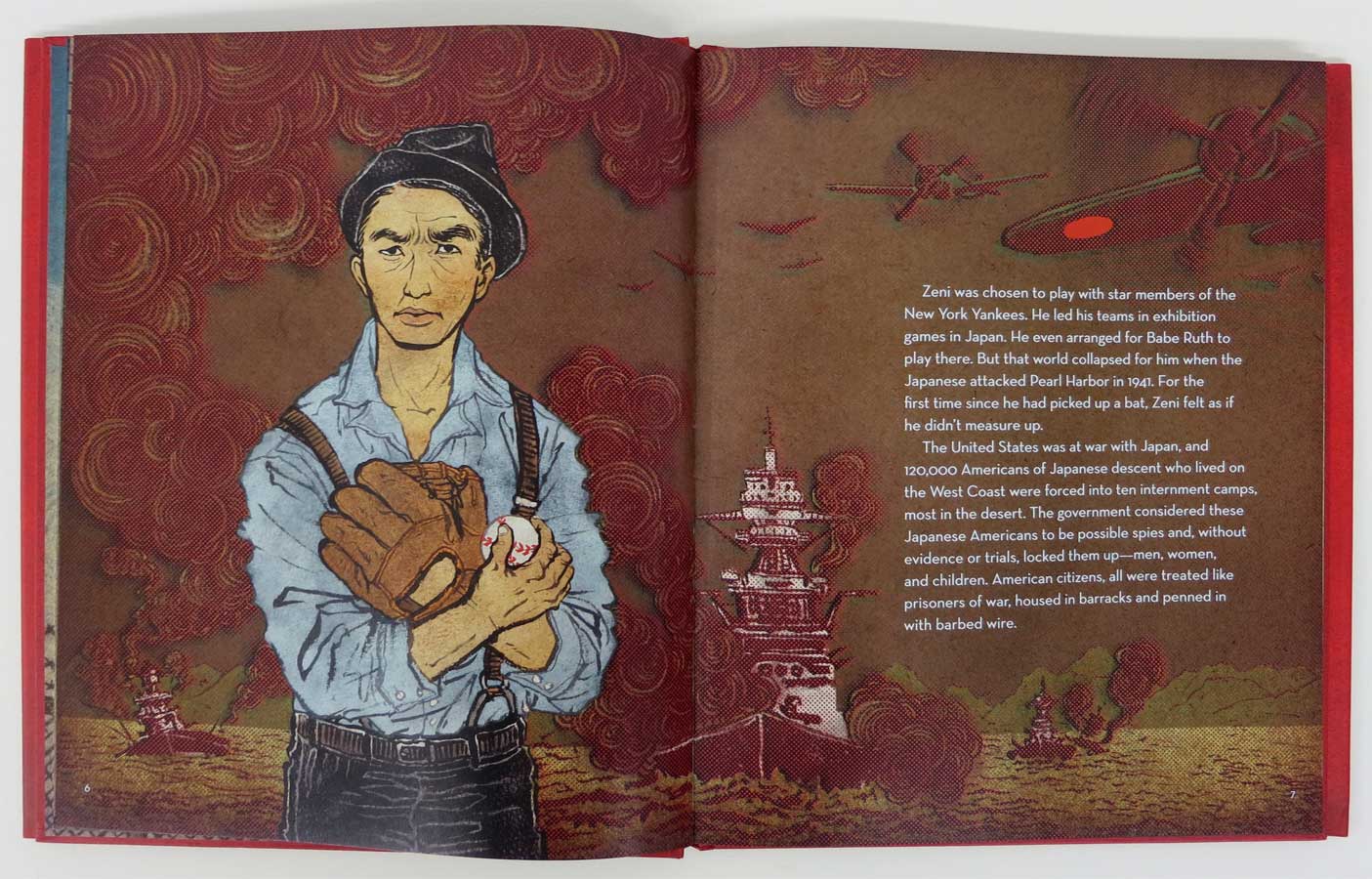
Barbed Wire Baseball Written By Marissa Moss Illustrated By Yuko Shimizu 2013
Abrams Books For Young Readers


Brilliant, brilliant book that presents a fascinating story
that is little known.
The subject of the
book is Kenichi “Zeni”
Zenimura (1900-1968). He is considered the father of Japanese-American
baseball, and he also popularized the game in postwar Japan. Zenimura was an extraordinarily
talented player who played all nine positions. He pitched right handed, but he
bat left handed.
Zenimura was born in Japan, and he moved to Hawaii when he
was 8 years old. There, he fell in love with baseball. After he graduated from
school, he moved to Fresno and formed a baseball team. In October of 1927, he
was one of four Japanese–American players picked to play in an exhibition game with the Yankees in Fresno. There is a photo of Zenimura standing in between Babe Ruth and Lou Gehrig
that is reproduced in the artwork of the book. The actual photo appears in the
afterword.
When he was interred at the Gila River camp, Zenimura began
to covertly build a baseball field at the camp. When his efforts
escalated to the point that he was going out under the cover of night to steal
wooden posts from the camp fence so that he could build bleachers for the
field, the camp guards noticed. However, they observed that he we only taking
every other post, and thus leaving the structural integrity of the fence
intact. The guards did not raise the alarm. They quietly watched Zenimura.
Eventually, their position moved from quiet acquiescence to providing assistance
to the effort.
As Zemimura’s efforts grew, more and
more of the camp got involved. They pitched in to help weed the field, level
it, plant grass, make uniforms, and they become players and spectators.
I am especially impressed by the insight that is offered in
the artist’s note in the back of the book. I am always fascinated
by the way that the real, the imagined, and the fanciful all interact and come
together when non fiction stories are recounted in picture books. This
illustrator’s notes are highly unusual because they present this
interaction as its central theme.
The artist notes that while barbed wire was present at the
early stages of the camp, it was later removed. He decided to maintain it in
the illustrations in order to stress the fact that the camp was indeed a prison
for those who were held there.
There are almost no photos of Zenimura during his
concentration camp years. Actually there is one that was shot from distance in
order to show the field. Zenimura and son appear in this photo, but the
distance is too far to make out their features. The artist had to use photos of
Zenimura from before the war to provide the model for his face.
I also appreciate the fact that the artist shares with us
that while he did extensive research on the Gila River camp in order to depict
it accurately, he also used photos from other camps in creating the art.
He could not find any visual images of the teams’ uniforms, so he adapted a homemade uniform from the period as a pattern, and he applied
a bit of artistic imagination.
It is all too rare that we get such insights into how the
creative process informs the depiction of nonfiction presentations.
The art is extraordinarily striking. Very stark and
engaging, and yet with a fantastic range of expression preserved. There are
elements of collage, older Japanese art styles, and a hint of Chinese
propaganda poster style. The effect is very visually impactful, and it brings
home the fact that this is a prison camp being depicted.
In emphasizing the starkness of the camp, the art highlights
the humanity of the people held within.
Highest possible recommendation!
By all means, use in conjunction with “My
Dog Teny” .

No comments:
Post a Comment
Note: Only a member of this blog may post a comment.